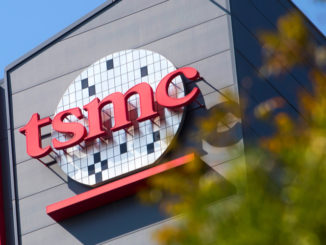
We live in a world of stratification, social, economic, and technical. It stands to reason similar hierarchies will play out during the indeterminately long chip shortage with the lower, cheaper end of the market floundering while the cutting-edge, top of the line companies with technical, leading node advantage thrive. But like all hierarchies, they are not guaranteed pure protection from turmoil.
The global chip shortage that has gripped consumer and automotive segments has been well-publicized, especially after factory shutdowns where a $30 component can halt production of a $60k product. These segments have their own complications from a chip manufacturing perspective, but how high up the computing food chain might these problems extend? And what are the differences for those at the bleeding edge versus those on cheaper trailing nodes?
The capacity to make chips is absorbed, and even for those who can find a sudden spot among the majors, the lead times are long. Further, those in the hardest hit automotive and consumer tech industries have limited options with strict certifications for specific fabs, which minimizes flexibility. And as if this was not enough to contend with, the capacity demands are even further complicated by materials shortages, including those required for base substrates. In other words, semi consumers are between a rock and a hard place and the only way out is for TSMC, Global Foundries, Samsung, and others to build more capacity—not exactly a quick or capital-light venture.
While the integrated manufacturers of the world can navigate through the chip crisis differently than the majority of companies that are either fabless or go directly through TSMC, Global Foundries, Samsung, or other fabs are all facing similar crunches. But for those who have reserved capacity for leading node technology, including companies like AMD, Qualcomm, Nvidia, and others, they have an advantage that the chip customers on trailing nodes (automotive and consumer tech) don’t. It’s about investment and value. For those who have reserved capacity in high-investment (relatively) high-return 7nm, 5nm, and even 3nm processes, they are where the most commanding wafer prices are and where the most innovative investments have gone from the large fabs, even if the production of these devices is a smaller slice of their overall production. Over time, there just hasn’t been as much capacity built up for the trailing node, which is where auto and consumer industries are.
Not all of this fault falls on the foundries simply not having enough capacity to meet the roughly 6-7% growth increases they have been expecting. Covid created unexpected reduced/extended demand fluctuations with end user companies freeing up or not taking extra capacity due to uncertainty. When the time came, they realized it was needed, and it’s not a quick or even possible process to just pop out and grab free capacity and even when that happens, the lead times are far longer than any auto or PC maker with stalled factories wants to wait around for.
Syed Alam, semiconductor global lead and managing director of Accenture says that there are stark differences between how trailing node customers in auto and consumer goods are affected and how those at the leading edge might fare in the coming months.
He is careful to note that all is not sunny for the leading, high-end of semiconductor production, it’s not a world of unlimited supply, but the impact will likely not be as devastating. “Because foundries can command premium pricing from leading node wafers, there’s big investment and demand from some of major customers. There is a potential supply situation on the leading node too because of the investments needed over time.” He says that those at this high end will need to continue to watch the capacity situation closely despite statements from TSMC and Samsung that they are investing even more in the leading node.
At the high end of computing there is one group that will see more significant impacts for as long as the chip shortage lasts. Over the last five years, we’ve seen a Cambrian explosion for accelerators and workload-specific devices for the datacenter, especially in the AI chip startup space. While many of these companies do smaller runs, scaling up production at a time when the market might be ready for more could be problematic.
“It’s a tough situation for smaller companies and startups,” Alam says. “They don’t have the scale or leverage to get capacity.” He adds that foundries do have low volume prototyping runs for companies like these. “They may not get priority but they can still get some products out.”
Alam says that as of now, there is not a discernable impact in terms of what, for instance, the big cloud vendors can upgrade to or add to their datacenters. He is quick to caution that this relatively stable situation might not last. Being vigilant about where demand is cropping up for competing devices on the same node in the months ahead, having a dual-pronged certification strategy to add flexibility to fab options, and understanding deeply the dynamics of the evolving semiconductor capacity landscape are all essential—and all things that many companies, at least in Alam’s view, don’t have a good handle on, especially those at the trailing edge who found themselves blindsided when they reduced capacity needs only to find requirements were higher than ever.
There aren’t any real short-term fixes for this problem, no matter what technology is being deployed and whether for the high or low end of the market. For now, Alam says, the best tool is to make sure these market and supply chain dynamics are understood in real time. The long term solutions are the only real answers now and these involve massive investments over extended periods of time.
“Demand for chips is increasing. It used to be chips were driven by server, then PC, then mobile came along and now chips are everywhere; 5G, IoT, cloud, etc. With this increased demand, adding a fab would help but it’s not practical in the short term. While TSMC, for example, announced capital investments in facilities of $28 billion, the payoff from this is still quite some time away.”
While it pays to be at the leading edge of technology where the stakes are higher, there’s still reason for the AMDs, Nvidias, Qualcomms, and others to be vigilant. Even with billions of dollars of investment from the major foundries, if they are not able to understand what trailing nodes are most needed and balance those demands with the high end, this semiconductor crisis could continue to lag on, affecting even those at the top, with high value but far lower product share, over time.





We have reached a point where transistor growth is rapidly converging with capital growth. That means while transistor growth might have doubled for the same amount of deployed capital per year, now you need to deploy (for sage of argument) approx 1.5x the capital to double transistor growth. Soon it will be close to parity. At that point you won’t get growth in the semi industry overall without commensurate growth in the semi cap industry. Consolidation and pricing power mean the share of the semi cap equipment industry should rise as well. Back in 2000 total semi cap market was about 20% of the overall semi market. It’s currently about 10% that thanks to the productivity enhancements, line shrinks etc over the past two decades. Those productivity enhancements are ending due to end of Moore’s law. There is no easy fix. As you pointed out in the past there were predictable drivers – pc, server, mobile. Now demand is exploding across the economy as everything is getting digitized- AI, cloud, 5g, autos. New drivers plus Moore’s law means new fabs will be required. The world is just starting to understand that.